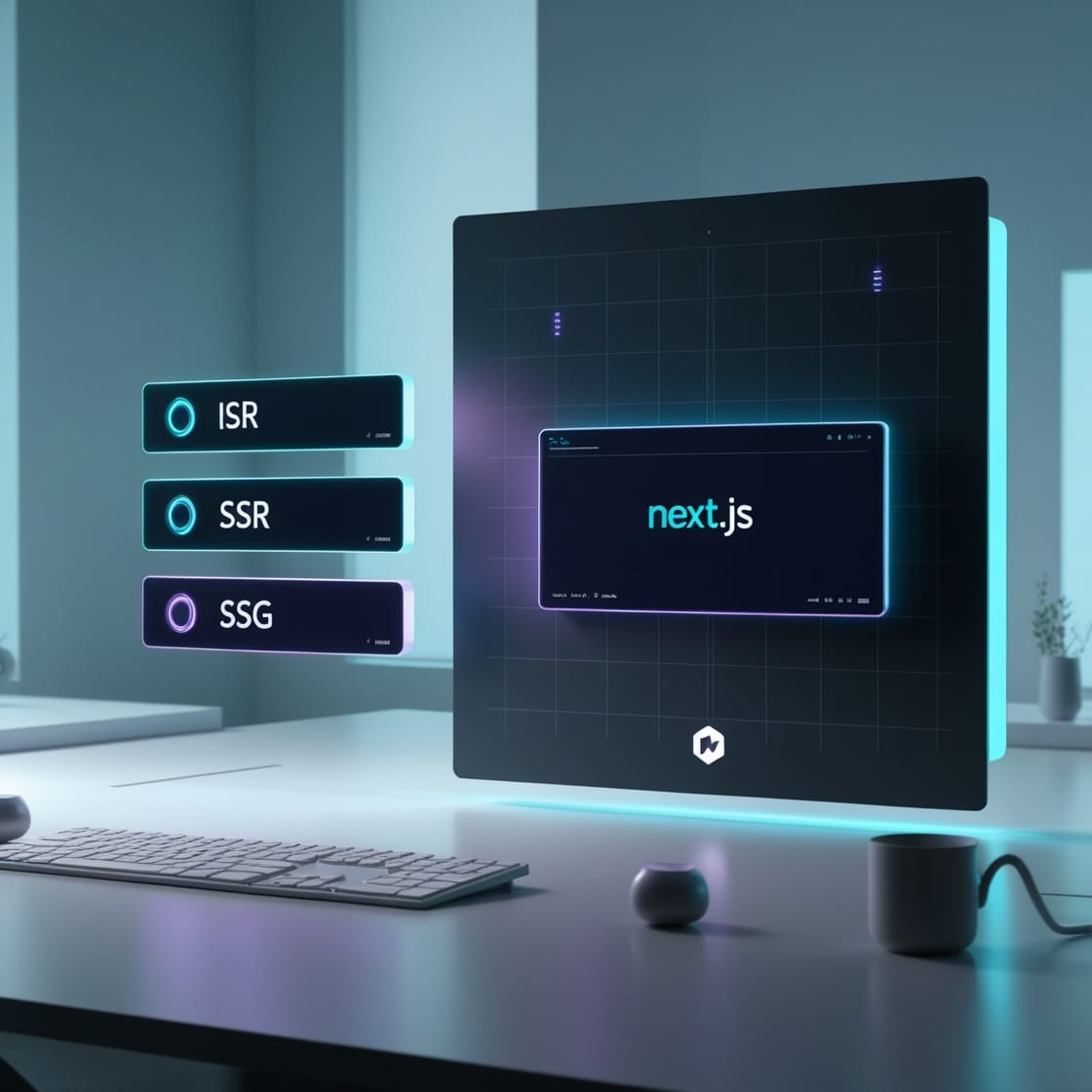Incremental Static Regeneration (ISR) vs. SSR vs. SSG in 2025: Real-World Use Cases with Next.js
Learn the key differences between ISR, SSR, and SSG in Next.js 2025. Discover real-world use cases, performance considerations, and when to use each rendering method for fast, scalable, and SEO-optimized web applications.

In the fast-evolving world of web development, performance and scalability are no longer optional—they're expected. With frameworks like Next.js, developers now have the power to choose how pages are rendered: Static Site Generation (SSG), Server-Side Rendering (SSR), and Incremental Static Regeneration (ISR).
But with great power comes great confusion.
In this blog, we’ll break down the differences between SSG, SSR, and ISR—in the context of 2025, backed with real-world examples, best practices, and clear decision-making criteria. Whether you're building a personal blog, a SaaS dashboard, or a product marketplace, this guide will help you choose the right rendering strategy.
🧠 What Are SSG, SSR, and ISR?
Let’s start with simple definitions:
- SSG (Static Site Generation): Pages are generated at build time.
- SSR (Server-Side Rendering): Pages are rendered on each request.
- ISR (Incremental Static Regeneration): A hybrid approach—pages are built at runtime after deployment, on-demand.
🔍 Real-World Use Cases
Let’s look at practical examples from real-world scenarios—like the kind of projects I’ve worked on.
✅ 1. Static Site Generation (SSG)
Use SSG when:
- Your content doesn’t change often.
- You want the fastest performance and cheapest hosting.
Example:
A marketing landing page or portfolio homepage.
// Example: getStaticProps for SSG
export async function getStaticProps() {
const res = await fetch('https://api.example.com/home');
const data = await res.json();
return { props: { data }, };
} ✅ 2. Server-Side Rendering (SSR)
Use SSR when:
- You need real-time data on every request.
- SEO matters and the content changes frequently.
Example:
An admin dashboard or user-specific page (like /account).
// Example: getServerSideProps for SSR
export async function getServerSideProps(context) {
const res = await fetch(`https://api.example.com/user/${context.params.id}`);
const user = await res.json();
return { props: { user }, };
} ✅ 3. Incremental Static Regeneration (ISR)
Use ISR when:
- You want static performance but can’t rebuild the whole site often.
- Content changes frequently, but not per request.
Example:
A blog site, where posts are updated or added regularly.
// Example: ISR using getStaticProps with revalidate
export async function getStaticProps() {
const res = await fetch('https://api.example.com/posts');
const posts = await res.json();
return { props: { posts }, revalidate: 60, }; // Revalidate after 60 seconds
} This tells Next.js to serve the static version until 60 seconds have passed. On the next request, it regenerates the page in the background.
💡 Pro Tips for 2025
Choosing between SSG, SSR, and ISR depends entirely on the nature of your content, user expectations, and performance goals.
- Use SSG when the content is mostly static and performance is a top priority.
- Use SSR when content must be fresh on every request or tailored to each user.
- Use ISR when content changes frequently but doesn’t require regeneration on every request — giving you the best of both worlds.
Understanding when and where to use each method helps ensure you're not just building a functional application, but a fast, scalable, and user-friendly one.
🧪 Tools & Monitoring
Use these tools to audit and improve your rendering strategy:
- Vercel Analytics – monitor performance and regeneration
- Lighthouse – check Core Web Vitals
- Next.js Middleware – for SSR customization
✍️ Final Thoughts
Choosing the right rendering method isn't about chasing trends—it's about solving problems the right way. With Next.js 14+, we’re seeing more hybrid approaches emerge. And as you build faster, more resilient applications, the decision between SSR, ISR, and SSG should always come back to one thing:
“What’s best for the user experience?”
🙋 Want More?
I’m currently building scalable UI kits, full-stack platforms, and modern content systems using Next.js, Supabase, and Tailwind. Check out more on my portfolio or connect with me on LinkedIn.




